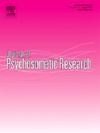Cumulative Exposure to Adverse Childhood Experiences and its Impact on Impulsivity among Mexican Adults
IF 3.3
2区 医学
Q2 PSYCHIATRY
引用次数: 0
Abstract
Objective
The effect of childhood adversity on impulsivity remains unclear in the Mexican population. We examined the association between cumulative number of Adverse Childhood Experiences (ACEs) and impulsivity in this population.
Methods
The sample consisted of 2100 adults. ACEs were measured using the 10-item ACE questionnaire. The Plutchik Impulsivity Scale was used as screening tool for impulsivity. A cumulative score of ACEs was also computed. All data were analyzed in SPSS v. 23.
Results
The prevalence of ACEs ≥1 was 65.8 %. The mean scores reported on the impulsivity scale were 17.96 ± 6.21 in participants who experienced ACEs and 14.75 ± 5.74 in participants who had not experienced any ACEs. The odds of impulsivity in adulthood increased 1.89 times (p < 0.001) among those with 1–2 ACEs, 3.91 times (p < 0.001) among those with 3–4 ACEs, and 7.63 times (p < 0.001) among those with five or more ACEs when compared with those who had not experienced any ACEs.
Conclusions
The findings of the present study have shown that an accumulation of ACEs significantly increased the risk for impulsivity in the adulthood.
墨西哥成年人童年不良经历的累积暴露及其对冲动的影响
目的在墨西哥人群中,童年逆境对冲动的影响尚不清楚。我们研究了这一人群中不良童年经历(ace)累积数量与冲动之间的关系。方法调查对象为成人2100人。ACE采用10项ACE问卷进行测量。采用Plutchik冲动性量表作为冲动性的筛选工具。同时计算ace的累积分数。所有数据用SPSS v. 23进行分析。结果ace≥1的发生率为65.8%。在冲动量表上,经历过ace的受试者平均得分为17.96±6.21分,未经历过ace的受试者平均得分为14.75±5.74分。成年后冲动的几率增加了1.89倍(p <;0.001), 1 ~ 2次a组,3.91次(p <;3 ~ 4例ace患者中,p < 0.001),为7.63倍(p <;与没有经历过任何ace的人相比,经历过5次或更多ace的人的患病率为0.001)。结论本研究结果表明,ace的积累显著增加了成年后冲动的风险。
本文章由计算机程序翻译,如有差异,请以英文原文为准。
求助全文
约1分钟内获得全文
求助全文
来源期刊
CiteScore
7.40
自引率
6.40%
发文量
314
审稿时长
6.2 weeks
期刊介绍:
The Journal of Psychosomatic Research is a multidisciplinary research journal covering all aspects of the relationships between psychology and medicine. The scope is broad and ranges from basic human biological and psychological research to evaluations of treatment and services. Papers will normally be concerned with illness or patients rather than studies of healthy populations. Studies concerning special populations, such as the elderly and children and adolescents, are welcome. In addition to peer-reviewed original papers, the journal publishes editorials, reviews, and other papers related to the journal''s aims.

 求助内容:
求助内容: 应助结果提醒方式:
应助结果提醒方式:


